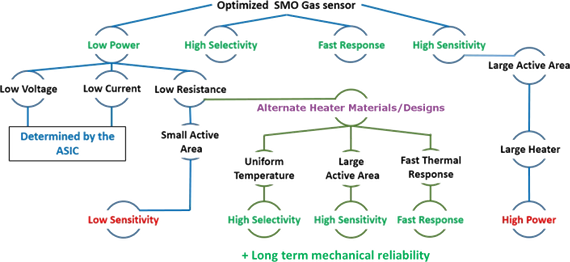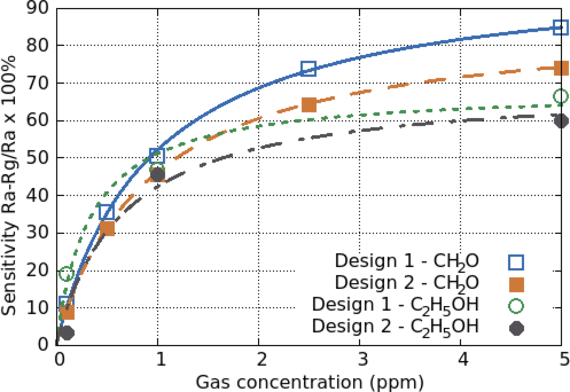 |
|
||||
BiographyLado Filipovic is an Assistant Professor of Modeling and Simulation of Integrated Semiconductor Sensors at TU Wien. He obtained his Master’s degree in Applied Sciences (MASc) from Carleton University, in Ottawa, Canada, in 2009, and his doctoral degree (Dr.techn.) in Microelectronics and venia docendi (habilitation) in Semiconductor Based Integrated Sensors from the TU Wien in 2012 and 2020, respectively. He has served as a reviewer for several DFG projects, has edited a book on Miniaturized Transistors, and has reviewed for many leading journals. He is also an active member of the Technical Program Committee for outstanding IEEE sponsored conferences, such as IEEE Sensors and SISPAD. He has been a Principal Investigator in various research projects funded by, e.g., the EU FP7 and Horizon 2020 programs and the Austrian Research Promotion Agency (FFG). His primary research interest is studying the operation, stability, and reliability of novel semiconductor-based sensors using advanced process and device TCAD approaches. With his team, he is currently investigating metal oxide semiconductors and two-dimensional materials, e.g., graphene and MoS2, for the detection of environmental pollutants and biomarkers from exhaled breath. |
|||||
Optimization of Metal Oxide Semiconductor-Based Gas Sensors
The way in which we perceive our environment is heavily influenced by the molecular composition of the air we smell and breathe. Our nose is an efficient tool with which to detect the presence of a broad variety of different smells, but it is unable to pinpoint exact gas concentration and fails entirely in the detection of several highly dangerous and toxic gases, such as carbon monoxide (CO). Many gases are harmful only above a certain concentration, which is why governments have set out guidelines and regulations to limit our exposure to them. However, different standards are used around the globe, as can be noted in the table below, where the suggested standards from the UN, EU, USA, China, and Hong Kong for several potentially hamful gases (CO, NO2, O3 and SO2) are outlined1:
| WHO / UN | EC / EU | EPA / US | MEP / China | EDP / Hong Kong | |
|---|---|---|---|---|---|
| CO | 100 mg/m3 (15 min) 15 mg/m3 (1 h) 10 mg/m3 (8 h) 7 mg/m3 (24 h) | 10 mg/m3 (8 h) | 35 ppm (1 h) 9 ppm (8 h) | 10 mg/m3 (1 h) 4 mg/m3 (24 h) | 30 mg/m3 (1 h) 10 mg/m3 (8 h) |
| NO2 | 200 μg/m3 (1 h) 40 μg/m3 (1 yr) | 200 μg/m3 (1 h) 40 μg/m3 (1 yr) | 100 ppb (1 h) 53 ppb (1 yr) | 200 μg/m3 (1 h) 80 μg/m3 (24 h) 40 μg/m3 (1 yr) | 200 μg/m3 (1 h) 40 μg/m3 (1 yr) |
| O3 | 100 μg/m3 (8 h) | 120 μg/m3 (8 h) | 75 ppb (1 h) | 200 μg/m3 (1 h) 160 μg/m3 (8 h) | 160 μg/m3 (8 h) |
| SO2 | 500 μg/m3 (10 min) 20 μg/m3 (24 h) | 350 μg/m3 (10 min) 125 μg/m3 (24 h) | 75 ppb (1 h) 0.5 ppm (3 h) | 500 μg/m3 (1 h) 150 μg/m3 (24 h) 60 μg/m3 (1 yr) | 500 μg/m3 (10 min) 125 μg/m3 (24 h) |
It has become increasingly apparent that semiconductor metal oxide (SMO) based gas sensors have the highest potential for integration with portable electronics due to their ability to be fabricated using mature complementary metal oxide semiconductor (CMOS) technology. CMOS integration ensures that the SMO gas sensor enjoys low power dissipation, low cost of fabrication and a small footprint when compared to its competitors (pellistors, piezoelectric sensors, electrochemical sensors, photoionization sensors, etc.). One disadvantage of SMO sensors is their need to be heated to several hundred degrees Celsius before the chemical reaction required for sensing begins to take place. This means that integration with a micro-electro-mechanical system (MEMS) microheater is critical. When attempting to optimize sensor operation, we must therefore take the microheater into consideration. In Fig. 1, we show the typical optimization goals, which are:
▸Low power
▸High selectivity
▸Fast response
▸High sensitivity
The selectivity and response time are primarily determined by the choice of sensing film and sensor design, but when trying to optimize both power dissipation and sensitivity, we very quickly come to a trade-off. Low power is possible by reducing microheater resistance, which means using a small area, but a small sensor area reduces sensitivity. Therefore, the only way to further the capabilities of today's SMO sensors is by investigating alternate heater materials and designs.
The proper optimization of the MEMS microheater is critically important in order to ensure that the high temperature component is properly thermally isolated from the rest of the integrated digital, analog or radio frequency circuitry, a uniform temperature is provided to the sensing film, and the mechanical stress resulting from the heating cycles does not cause critical damage to the membrane stack upon which the sensing film is deposited. In the course of our studies, we have looked into the use of platinum (Pt), tungsten (W) and tantalum aluminum (TaAl). We have chosen TaAl for several designs due to the material's ability to retain its mechanical strength at high operating temperatures and its low temperature coefficient of resistance (TCR) which is -100 ppm/K. This property is advantageous as compared to platinum, which has a positive TCR that is associated with an increased number of hotspots. Tungsten, on the other hand, is known to oxidize when exposed to air at high temperatures. Using a TaAl microheater and SnO2-Pt sensing film, we have designed two sensors, with their sensitivities to formaldehyde (CH2) and ethanol (C2H5OH) shown in Fig. 2. Both designs were fabricated using a novel perforated membrane method, which applies a sacrificial polyimide layer to release the membrane that houses the microheater and SMO sensing film.
Of the two SMO designs whose sensing results are given in Fig. 2, Design 1 was shown to have a better temperature uniformity across the sensing area. While increased uniformity improves the sensitivity, it has also been shown to improve the baseline drift, as shown in Fig. 3. Design 1 showed a highly stable baseline, settling after about 5 minutes, while Design 2 showed a drift even after 25 minutes of relaxation time. Furthermore, the lifetime and reliability of the microheater should be improved by greater temperature uniformity. Thermo-migration failure occurs when high thermal gradients are found inside a metal line. By improving the uniformity, the gradient is thereby reduced, and the effects of thermo-migration are at least partially mitigated.

Fig. 1: Limitations and trade-offs that must be considered in order to enhance the sensitivity and reduce the power dissipation of SMO gas sensors.

Fig. 2: Sensing response of two different designs to exposure to formaldehyde (CH2O) and ethanol (C2H5OH) concentrations up to 5 ppm using a TaAl microheater and a SnO2 SMO film with Pt nanoparticles. The symbols are measured results, and the lines are best fit lines using the Langmuir adsorption model.

Fig. 3: Baseline response of the two sensors during operation for 25 minutes, showing a significant improvement in the baseline drift for Design 1, whose temperature uniformity across the sensing area is better than that of Design 2.


